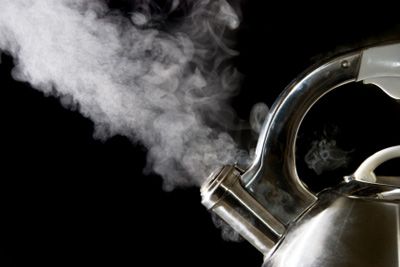You have the best of intentions when you rinse your dishes before stacking them, but the habit is unnecessary and counterproductive. Most modern dishwashers come with a sensor that evaluates the water to determine how long the cycle should be and how much water is necessary to produce a thorough clean.
"Even if you press the 'normal cycle' button, the length and temperature of the cycle can vary, depending on what the sensor detects. It does this through a measure of turbidity (how cloudy the water is) during the pre-rinse cycle – before the detergent is even released into the water," Brashear explains. "The water in the pre-rinse will remove any loose soils the same way they would be removed with water alone by pre-washing. The machine will then recognize that there is food present and will run a more thorough cleaning cycle."
She cautions, "If you pre-wash all of your dishes except for one casserole dish with some baked-on cheese, nothing will come off in the pre-wash ... and it will run a shorter cycle, leading to a less thorough clean and potentially a failure on that one casserole dish."
There are components in your dishwasher detergent like chelants and enzymes, which are designed to break up food particles. "Since the job of these enzymes is so specific, if that starch or protein isn't present, they do not have another job they can do. So, they are either simply removed with the wash water or, in some particularly problematic situations, the detergent can appear to deposit onto the dishes, leaving a powdery residue," says Brashear.
The general rule of thumb? "Scrape off all of the chunks or things that might clog up the machine. Any sauce or crumbs we recommend to keep," she explains.



